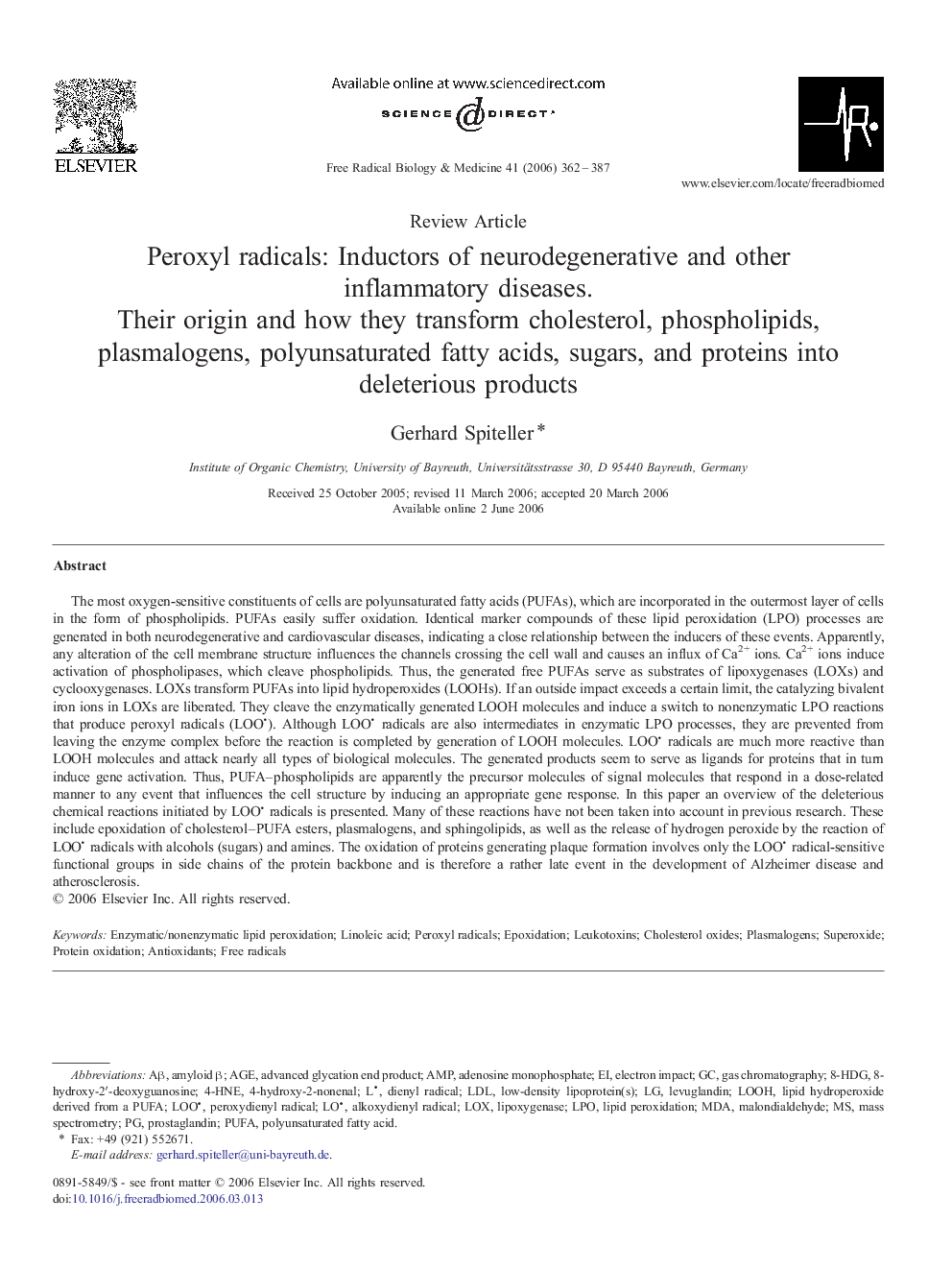| Article ID | Journal | Published Year | Pages | File Type |
|---|---|---|---|---|
| 1911327 | Free Radical Biology and Medicine | 2006 | 26 Pages |
The most oxygen-sensitive constituents of cells are polyunsaturated fatty acids (PUFAs), which are incorporated in the outermost layer of cells in the form of phospholipids. PUFAs easily suffer oxidation. Identical marker compounds of these lipid peroxidation (LPO) processes are generated in both neurodegenerative and cardiovascular diseases, indicating a close relationship between the inducers of these events. Apparently, any alteration of the cell membrane structure influences the channels crossing the cell wall and causes an influx of Ca2+ ions. Ca2+ ions induce activation of phospholipases, which cleave phospholipids. Thus, the generated free PUFAs serve as substrates of lipoxygenases (LOXs) and cyclooxygenases. LOXs transform PUFAs into lipid hydroperoxides (LOOHs). If an outside impact exceeds a certain limit, the catalyzing bivalent iron ions in LOXs are liberated. They cleave the enzymatically generated LOOH molecules and induce a switch to nonenzymatic LPO reactions that produce peroxyl radicals (LOO). Although LOO radicals are also intermediates in enzymatic LPO processes, they are prevented from leaving the enzyme complex before the reaction is completed by generation of LOOH molecules. LOO radicals are much more reactive than LOOH molecules and attack nearly all types of biological molecules. The generated products seem to serve as ligands for proteins that in turn induce gene activation. Thus, PUFA–phospholipids are apparently the precursor molecules of signal molecules that respond in a dose-related manner to any event that influences the cell structure by inducing an appropriate gene response. In this paper an overview of the deleterious chemical reactions initiated by LOO radicals is presented. Many of these reactions have not been taken into account in previous research. These include epoxidation of cholesterol–PUFA esters, plasmalogens, and sphingolipids, as well as the release of hydrogen peroxide by the reaction of LOO radicals with alcohols (sugars) and amines. The oxidation of proteins generating plaque formation involves only the LOO radical-sensitive functional groups in side chains of the protein backbone and is therefore a rather late event in the development of Alzheimer disease and atherosclerosis.
